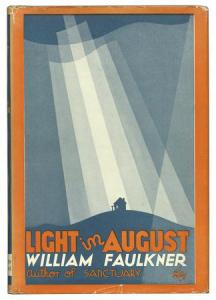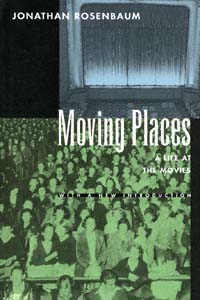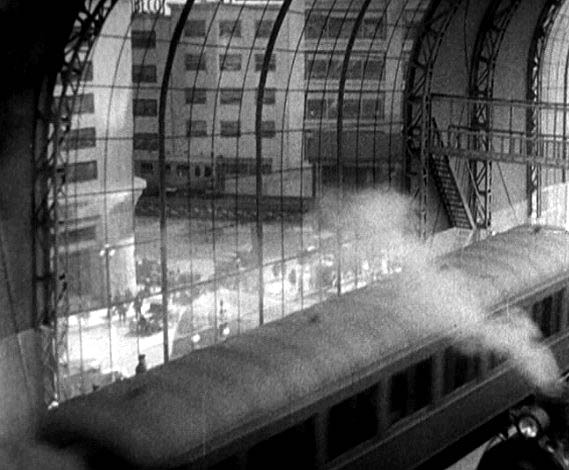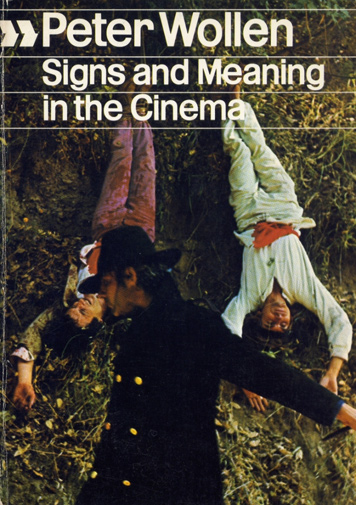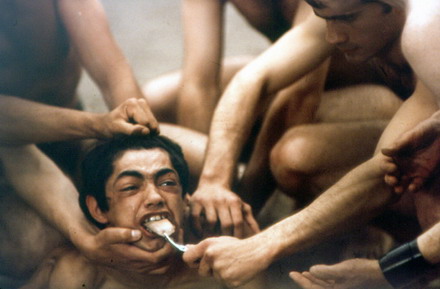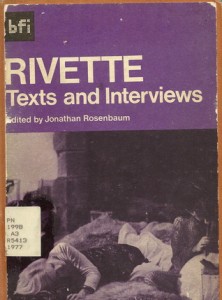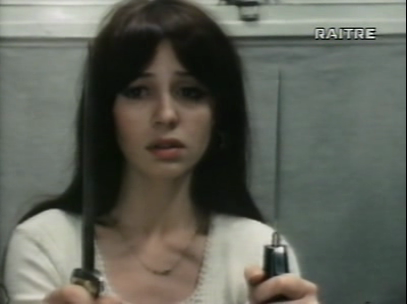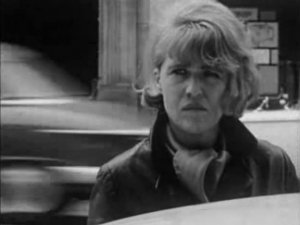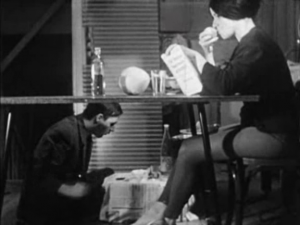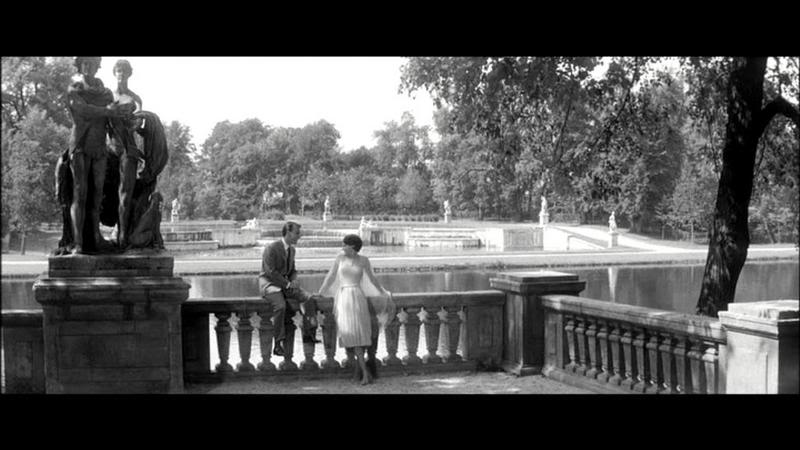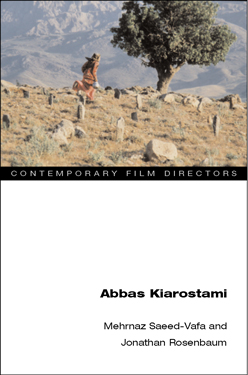From Framework (volume 45, number 1, Spring 2004). Because of its length, I’m running this in two parts. — J.R.
This interview took place in Buenos Aires, Argentina, April 20, 2002 — if memory serves, at the Abasto shopping mall, where the Buenos Aires Festival of Independent Film was then being held.
NK: How did you come to film criticism and film journalism? You start out in the States and have some years in Paris and then London and then back to the States.
JR: Like most other film critics of my generation I didn’t set out to be a film critic. I was a writer from very early on and my family was involved in the film business but my initial interest was in being a fiction writer. I wrote fiction in high school and in college and was hoping, very unrealistically, to have a career as a novelist.
NK: The fiction writer aspect survives into the opening page of Moving Places where you riff on the opening of William Faulkner’s Light in August.
JR: My MA thesis was on Light in August. At the time I got fed up and quit graduate school I was working on a novel and somebody I knew from college offered me a job editing a collection of film criticism. I needed work at that time and it seemed a very intriguing prospect. So I took that on and eventually it led me into writing about film because I started meeting all these critics who were included in the book. And I started writing a piece myself, on Murnau’s Sunrise, my favorite film at that time.
NK: What is the title of that collection?
JR: Film Masters. The book never came out — for a variety of reasons. But working on it was the way I got involved with film. And on my first trip to Europe I met Penelope Houston and Peter Wollen.
NK: Houston would have been editing Sight and Sound at that time and was this Wollen in his ‘Lee Russell’ days at New Left Review or later?
JR: I think Signs and Meaning in the Cinema had either just come out or was about to and he was in the Education Department at the British Film Institute.
NK: There were many ideological fights and internal disputes in those days at the BFI and at SEFT, and for many years afterwards. Were you caught up in any of that?
JR: One thing that irritated me then and continued to irritate me for many years later was the negative attitude taken towards Sight and Sound by people who were associated with the BFI. I could understand why people might be critical of Sight and Sound’s monopolistic position, given its state funding, but it struck me as odd that it was OK to be associated with the BFI if you were in the Education Department but not if you were in the Editorial Department, So I was tainted because I was with Sight and Sound and the BFI Editorial Department but Peter Wollen -– who did a book in the Cinema One series –- was not tainted. So there was an across-the-board attitude that was sort of…well, Stalinist. And it seems to persist. If you look at recent Sight and Sound collections you see that all the pieces are taken from the ‘New Series’, the re-vamped journal from 1991 onwards. This disturbs me because I think there is a lot of material of value in the earlier version of the magazine. The same kind of attitude affected me personally when I wanted to republish a collection of Rivette texts and interviews that I edited. They cannibalized pieces from that, cut them up and published them in the Cahiers collections edited by Jim Hillier, which meant the other pieces could never come out -— I regret in particular a really important interview with Rivette that came from La Nouvelle Critique. [2013 note: This is fortunately available now at http://http://www.dvdbeaver.com/rivette/ok/interviews.html/.] It also meant that I got no credit. But it’s not a big deal that I should receive no credit; the point rather is that I was the bad guy. When I had to get permission from the committee to do the Rivette book, Paul Willemen came into my office and said he’d be willing to support the book if I gave him an acknowledgement. So I said I would and he’s one of the people I thank. And around the same time he was doing a collection on Pasolini and I asked him if he knew a little piece Roland Barthes had published on Salo in Le Monde. He didn’t know about it, so I brought it in and gave him a copy, and he used it without acknowledging me. And I really think that was because I was associated with the enemy, I was Sight and Sound.
NK: But you were also involved with Monthly Film Bulletin whose legacy supposedly is incorporated into the new series Sight and Sound; and all those BFI cinephiles — like Wollen and Willemen — loved MFB!
JR: Yes, and to be quite fair people like Laura Mulvey and Peter Wollen didn’t think MFB was part of the enemy. So it was sort of schizophrenic; insofar as I was with Sight and Sound I was the enemy and insofar as I was associated with MFB I was OK. But since, in lots of ways, I was and am outside this world of British film culture I see a lot of conformity in English film criticism that goes beyond even the conflicted relations between Positif and Cahiers du Cinéma.
NK: I’m not quite sure what you’re saying. That moment in British film cultural history from the late 1960s on into the early 1980s had a lot of different battles and overlaps going on, which involved many journals: New Left Review, Screen, Movie, Monogram, Sight and Sound, Enthusiasm, Framework, Film Form (two issues!), Afterimage, the Edinburgh film festival derived collections (on Sirk, Corman, Fuller etc.) and no doubt other things I’m forgetting.
JR: These battles had a lot of meaning and I’m not trying to belittle them. Nonetheless it was difficult for me, because I was really trying to be a conduit. I was the only person at Sight and Sound who would sometimes go to Screen meetings, and I knew some of the Screen people. And it was difficult because of the mutual hostility between the two magazines. I had a slightly acrimonious exchange with Amy Taubin many years ago when she said [wrote] that Screen ‘fortunately is a magazine that is almost impossible to get in the USA.’ I wrote a sarcastic reply saying, ‘yes how wonderful it is we don’t have to worry about new work on Eisenstein and Vertov.’ And she replied saying that since the BFI published Screen and had also published my collection on Rivette then of course I would come to their defense. I’m saying that just to illustrate that there’s sometimes a huge discrepancy between the way things are viewed inside and outside the London film scene. From the vantage point of Amy, we were all in the same camp —- Penelope Houston, Ben Brewster, you name it.
People didn’t recognize that what was important about Sight and Sound was that 2/3 of the contents were not commissioned, but were contributions sent in by people who were strangers, and Penelope tried to have an open mind about that, and a lot of interesting things came in as a result. My point is that there was an attitude then, and even now, that if something appeared in ‘Penelope’s Sight and Sound’ it must be of no interest, it’s not even going to be mentioned in the BFI’s Cinema Book as an essential text and so on. It’s deemed better to put in another text, no matter how bad, that appeared in some other magazine on the same subject. It’s an absurd policy, one that doesn’t respect either readers or writers, and that’s when I think it becomes a bit Stalinist.
NK: So part of your objection would be that what you regard as these ideological processes of selections and non-selections of pieces of film criticism could skew various histories of film culture.
JR: Yes, I think so. I think the way a major figure like Raymond Durgnat has virtually been written out of the history of English film criticism is a good example of what I’m talking about. But that’s only one example, there are others. It happens when certain collections decide to by-pass people who don’t fit into their categories. This means a lot of people are being shortchanged, not just the people who are being ignored but the potential and actual readers of these collections — people who don’t necessarily know about the writers and writings that are being ignored.
NK: In the case of Durgnat, the BFI published his ‘modern classic’ on WR: Mysteries of the Organism, and are doing his book on Hitchcock’s Psycho. I understand you are contributing to a kind of fetschrift for Durgnat, edited by Adrian Martin that is coming out in Senses of Cinema. What are you doing for that?
JR: I’m publishing a piece I did for Film Comment back in 1973 before I’d met Ray, one of my first-ever published pieces, along with an autocritical preface to it that I wrote recently. And Ray wrote a response back in 1973 which we hoped would run as footnotes but the editor, Richard Corliss, opted to run it as a separate piece. I think Adrian is running it as Ray originally intended it, which is nice.
NK: Following on from your earlier comments on Sight and Sound, do you have any comments on the way it is now and how you would situate it alongside other English-language film journals?
JR: When Penelope left, Sight and Sound had a chance to become a more international magazine whereas it seems to me to have become more American, which is unfortunate. It fits too easily within the Premiere/Empire axis and it’s all geared towards consumerism. I once had lunch with Philip Dodd [when he was the editor] and he asked me what I wanted to write about. I said I’d like to write about Rivette’s Out 1, even though I don’t know when it’s going to become visible in England — though of course the point is that it’s unlikely to show unless you write about it. And Philip agreed, so I wrote that piece and then he didn’t run it, and never gave me an explanation. Whereas I think Penelope would have found a way to run a piece on something that wasn’t necessarily going to open, so long as it was of interest. So there was then a wider sense of a film community and after her it became very sectarian. I think that wider sense of a film community is now to be found in Senses of Cinema and Cinema Scope. There haven’t been film magazines like these since the 1960s, with journals like Film Culture or the three issues of Moviegoer, where you suddenly get a place where people of all different persuasions and positions can get together and mix, and so all this different work becomes available. And even though there are certain values behind these journals, they’re wide enough to accommodate lots of diversity; and even for the simple dissemination of information it becomes really important because otherwise information is simply what’s opening this week or this month.
NK: Could you say a bit more about your university years, where you did your undergraduate study, and how that got you involved with film study via the student film society; how does a guy who wants to be the next Faulkner make that move?
JR: I did my undergraduate degree at Bard College and that was the only part of my university education that I really liked and value.
NK: Bard is in upper New York State, a couple of hours up the Hudson?
JR: Yes and there’s an interesting little bit of folklore that connects Bard to the wider culture. Bob Dylan’s ‘Subterranean Homesick Blues’ was written when Dylan was working as a night-watchman near a bar on campus, and there was a water pump in the town —- it’s a very tiny town, Annandale-on-Hudson —- and the lines in that song, ‘the pump won’t work etc.’ refer to that water pump. I started my undergraduate study at NYU as an English major and after three semesters I transferred to Bard. And I enjoyed Bard so much that I stretched my time out there to five rather than four undergraduate years. I ran the film society there, a Friday night series, and so I was involved with film on that level. And I partly conducted my film education through the films I booked.
NK: What years are these?
JR: I went to Bard in 1962 and graduated in 1966. And I think it was 1963 to 1966 that I was running the film society.
NK: And what prompts you to leave an uncompleted PhD and move to Paris?
JR: A few intermediate steps. I had written my MA on Faulkner at the State University of New York at Stony Brook, and I wanted to write a PhD dissertation on film and literature; and I completed everything but my dissertation.
NK: So you’re an ABD! I remember when U.S. academic jobs were advertised they would often say, “no ABDs (‘all but dissertation’) need apply.”
JR: That’s right. And they never even gave me a ruling on my proposed PhD topic. I couldn’t get them to take it on, or to say no. So I got fed up and waited until I knew I wasn’t going to be drafted to go to Vietnam — there were a lot of enlistments from Alabama — and when I reached the ‘safe’ age I quit graduate school. It was about 1968, I was living in New York and commuting to Stony Brook and working on that film anthology I mentioned earlier. And towards the end of my work on that I decided to move to Paris. I had the dregs of an inheritance from my grandfather’s movie business, so I wasn’t obliged to find a job. I moved to Paris to finish a novel and to continue my informal film education. It was part of the fantasy of the American expatriate abroad. I had a pleasant time in Paris in 1968. I arrived the day after the Odeon was taken back by the police, so I got some tear gas, and I ran from police and so on. The big events of May ’68 were over but there was still stuff going on, and Paris was an exciting place to be. So I moved all my stuff there in the fall of 1969 with no particular plans for how long I was going to stay. I described it to friends by saying that I felt I was losing my sensory taste. In New York I was learning to get by without seeing and hearing certain things. There’s a way in which you shut off, get tunnel vision. And Paris became a very important place for me -– the way you could sit in a café and watch people going by, stare at people and they’d stare back, and I’m sure I had the best sex of my life during those years in Paris!
Then the anthology of film pieces -– which had been sold to a publisher —- didn’t come out. The guy who commissioned the book was involved with Scientology, and he ran off somewhere with the illustrations, and then the publisher had second thoughts about it and decided not to do it. I had to go back to New York, get a lawyer — it became a big, involved thing. It’s a pity that collection didn’t come out because it was ahead of a few things at the time. It was an international auteurist-oriented, criticism, oriented by director but the directors went from Feuillade to Hawks.
I lived in Paris for five years and for the first half of that time I had money to tide myself over, but then it ran out. On one trip back to New York I checked with Film Comment to see if they wanted a Paris correspondent and soon they were running everything I wrote for them. And less than a year after that I was published in Sight and Sound for the first time. It was a piece on Godard’s book of criticism, and this was 1971 or 1972, and I started to write regularly for both magazines.
So I scrambled around for another two and one–half years in Paris finding whatever jobs I could. Sometimes it was script translation or subtitling. I even got hired to write a first-draft screenplay that I knew would never get made, but it paid my rent. I got to meet Jean Seberg, who was the first person to read the script, and for a brief period Susan Sontag was interested as a director —- because it was an adaptation of a J. G. Ballard novel, The Crystal World, and Susan was a big Ballard fan. But I knew the script wasn’t going to be made and I knew it wasn’t my métier to write scripts.
NK: So this was Sontag after she had directed Duet for Cannibals?
JR: Yes, and after Brother Carl, but I can’t remember now whether it was before or after her documentary about Israel.
NK: What kinds of film criticism were interesting you in these early years, around the time of that aborted collection?
JR: When I was editing that book, Manny Farber’s writing was very important to me. I’d had a telephone conversation with him; I had a very limited budget and I offered him $50 or so for the reprinting rights to two of his pieces -— the piece on Sturges and another on Godard — and he was insulted by that amount. But I was determined to get him into the collection, so I wound up offering him $100 for the piece on Preston Sturges. Farber was important to me, as was Andrew Sarris. Pauline Kael was very important as a polemicist and writer. Her early pieces were very exciting for their polemical energy. Even though I disagreed with them I learned a lot from them. Roger Greenspun, Robin Wood, Raymond Durgnat, all those people were going to be in the collection.
NK: Was Sontag in there?
JR: I tried to get her to update her Bresson piece, but she didn’t want to. I wanted her to write about Au hasard Balthassar and Mouchette and she said she didn’t like to write about film any more. And I asked her, if she were to write again about film, who would she want to write about, and she said ‘Vertov.’ Annette Michelson was a friend and she had a piece in there. There was a possibility that her publisher, Praeger, would do the book but that didn’t pan out. Annette was a strong influence and a very good friend.
NK: I didn’t know until I read Jim Naremore’s book on film noir that Annette Michelson had appeared in a Noël Burch film, Noviciat (1964).
JR: Yes. The leading character is played by André S. Labarthe and it’s something of a shocker. It’s a direct indulgence of Noël Burch’s masochistic sexual fantasies and every major concern of his book, Theory of Film Practice, is covered in that twenty minute film, and quite powerfully. It’s the most impressive film Noel has made and it’s a pity it’s not more widely available. [2013 note: It was subsequently available for awhile on YouTube, but seems to have been removed.] His critical writing was also an influence on me at that time, as were the works of Cahiers du Cinéma writers and Tom Milne from Sight and Sound.
NK: What prompts the move from Paris to London?
JR: I ran out of money and as I said earlier, I was scrambling around doing various kinds of things. I had a wonderful experience working for Jacques Tati for a week or two but what had mainly been paying the bills in Paris was a column I was writing for a Hugh Hefner girlie magazine called Oui. I got to write about Lancelot du Lac there but they had what they called a “tits and ass” quotient so they had to have a certain number of stills illustrating sexier kinds of movies. Somebody else usually wrote about those movies. So I was looking for other kinds of work and Penelope Houston liked my writing, and they had a job going. Jan Dawson had been editing the Monthly Film Bulletin and when she left, her assistant Richard Combs became the editor, and I became his assistant. So thanks to Penelope I got a job in London. And it took a lot of effort on their part; they had to prove to the English government that nobody else could do this, and they even hired a lawyer -– someone suggested to them by Richard Roud -– and it took six months to get it through. So I was incredibly grateful to Penelope and the rest of them for doing that. I wouldn’t have moved to London otherwise.
NK: You’ve already touched on some aspects of your engagement with British film culture at that time but could you say some more about what you did at Sight and Sound and MFB?
JR: I was given a lot of freedom at Sight and Sound and I pushed things as far as I could in certain directions, trying to import certain ideas about the avant-garde and film theory into the magazine. My biggest creative role at the MFB was planning and starting up the informational supplements on the back page of the magazine. As I recall the very first one was a bibliography of Straub-Huillet interviews. I was given a lot of freedom and Penelope was an extraordinary editor, no question about it. She was already getting less interested in criticism than she had been but she was a very smart person who had written some very good criticism. I still think the piece she wrote on Last Year at Marienbad is one of the best things anybody ever wrote on that film. So I liked being in that film community. I also wrote for Time Out -– Chris Petit was their main film critic then and he gave me assignments. And even though I was also starting to get friendly with some of the people at Screen there was sometimes an unpleasantness in the warfare that went on, the typecasting of good guys and bad guys. It almost came down to what color shirt you were wearing. It was like that in France with the battles between Cahiers and Positif, and it’s that way now in its decadent phase. The power positions have nothing to do any more with critical perceptions or positions, it’s all to do with institutional positioning.
NK: Institutional position for what, towards what end? A readership?
JR: Well it’s like Cahiers is supposed to set down the cinematic-aesthetic law because that is what it has always done. But does Cahiers make discoveries now, as it used to? I don’t think so. I think they miss a lot of what’s important right now. They have a lot of good writers publish lots of good things but I think there’s a subtle cross-over in moving from a notion of a clique to that of an elite, and when it becomes an elite, when it becomes that much more of a club, there’s something wrong. After all, the original Cahiers young Turk movement was not a club that anyone wanted to belong to at that historical point. They were outcasts and that’s what gave them a fervor and a passion that was important. Once that hardens into an institutional line and an attitude towards an institution it obviously can’t be critically valuable in the same way. And also the academicizing of it was unfortunate, as happened when Cahiers got ‘collected’ into English. Because it was not originally an academic publication, it was made into that and when it became part of an academic syllabus something was lost.
NK: A different question; we’re talking in Buenos Aires. It’s your second visit to this wonderful Buenos Aires Independent Film Festival. How do you find it in comparison with other film festivals you attend regularly?
JR: What I love about this film festival is that it’s really the only film critics’ festival. It’s run by a terrific film critic, Quintín, and I think it’s had a very good influence already on other film festivals, for example, on Rotterdam. The director of the Rotterdam Film Festival, Simon Field, was on the jury here last year, as was I, and there were specific discussions about how to make established critical positions a little edgier.
NK: Your book Movie Wars has been translated into Spanish.
JR: It sold a thousand copies immediately and that surprised me. It was also very satisfying because my editor in the States, at a cappella, didn’t think the book would of interest to anyone outside the States. And I think that reflects a problem of people who are so into isolationism that they don’t know that there are common causes out there. For example, I can connect what this film festival is doing with things like Senses of Cinema (Australia) and Cinema Scope (Canada) and that’s why both of the editors of those journals are here this year, as part of the “movie mutations” section. Of course it’s the social aspect of the festival that becomes important, the networking. Rotterdam is about that too. There was a very important set of meetings that took place — in an impromptu way — at Rotterdam this year, which involved Adrian Martin from Australia and some Dutch and German film critics, so that they could start doing dossiers together, start publishing things in several languages — and that comes from making these links. Because before Rotterdam you didn’t know all these journals existed. And I think for those reasons it’s really important that the Buenos Aires Film festival is happening, because it’s a time when Argentina is being shut off from the rest of the world.
NK: In this respect, how would you place your co-authored book on Kiarostami that is coming out in James Naremore’s series on contemporary film directors for the University of Illinois press?
JR: The dialogue between and me and Mehrnaz Saeed-Vafa on Kiarostami was published in Senses of Cinema at the same time that it appeared in an Iranian film magazine–the same month. It was done very carefully and there was an interesting moment where I had quoted a phrase — unsympathetically — by Howard Hampton in which he referred to Iran as a “totalitarian theocracy.” In the Persian version the term is used, but in English, not in Persian. It was exciting for me to find out that there was an audience in Iran for this kind of book on Kiarostami. He’s a controversial figure there and they’re very interested in why Americans like him. And that feeds into the whole “movie mutations” idea because some notions of nationalism are predicated on a ridiculous idea of irreconcilable differences when in fact we see that people from all kinds of different places have more in common than ever before. I once wrote that the minute they install Coca Cola machines in Tehran they’ll stop finger-printing Iranian film directors when they come into American airports. I’m not trying to suggest some clichéd family of man here, or that we’re all alike. I just think there are enormous numbers of common interests that people share that are not being acknowledged and not being dealt with and once that happens then the political possibilities are staggering: look at the way the Internet can be used. For me, a very important recent book has been No Logo. Before I read that I had no idea that movement existed and it’s probably why people in countries like America and Russia don’t know about this book written by a Canadian.
NK: What film festivals do you find the most useful?
JR: In some ways, I would say, Cannes, alas … because it’s exciting and it’s also a nightmare. I mainly went in recent years when I was a member of the New York film festival selection committee. Toronto is very useful but it doesn’t take chances and it’s very industry dominated. They haven’t shown a Straub-Huillet film, for example. It’s a mug’s game to try to find out why a film doesn’t get shown in a festival because often it’s for the last reason you could think of. But Toronto is an essential festival and I go every year. It doesn’t have a politique the way the Buenos Aires and Rotterdam festivals do; or if it does have a politique it’s a commercial politique. Toronto’s the place where they’d decide how they’re going to cut films for release and people are on their cell phones during the screenings already making suggestions. And I gather this also happens at Sundance.
NK: In Movie Wars you are critical of both Sundance and Telluride; have you had any response to that criticism?
JR: A lot of people told me they thought Telluride didn’t belong in the same category, and maybe that’s true.
NK: Would you cite any other film festivals as being especially of note?
JR: I think a lot of festivals are valuable. The Chicago Film Festival is not regarded as a major festival but it’s shown a lot of important films over the years and it’s become a very important resource for people.
NK: Who do you like reading among contemporary people writing on film?
JR: Jim Naremore is someone I’m in awe of. He’s certainly my favorite film academic. Adrian Martin, Nicole Brenez, Kent Jones. Alex Horwath doesn’t write much but I learned an enormous amount from the one piece he wrote in Movie Mutations. That’s just for starters, there’s plenty more. A. O. Scott in the New York Times is someone who’s very intelligent and interesting, even without a film background. I go out of my way to read his stuff now.
NK: You have been critical of some of the New York film critics, for example, David Denby and Anthony Lane.
JR: I think they are entertaining and interesting writers but not important writers, just as I think the New Yorker as a magazine is not as interesting as it was in, say, the 60s. Compare it with the way Nicole Brenez has spent the last few years uncovering this amazing French experimental cinema that no-one’s been paying any attention to; there is a whole subculture that has screenings of difficult, experimental films, and it’s a very interesting community. I think that for a lot of people film criticism doesn’t exist any more and that’s because the film trade discourse has taken over, the market has taken over — and that’s why Trafic, Senses of Cinema and Cinema Scope are so important; they’re done as labors of love and an interactive community is being addressed.
People misread me when they claim that I’m arguing that if only millions of dollars were spent advertising Kiarostami movies then viewers would be storming the multiplexes. I don’t like to play the numbers game in that way. I prefer smaller and more intense audiences against larger, undiscriminating audiences. And I say that even when I write for a mass market publications. By and large I don’t think it’s important to reach more people, it’s the quality of one’s audience that’s the important thing.
NK: You and Jim Hoberman wrote an important book on cult cinema/midnight movies and in its second edition you included the interview in which you commented on changes between the earlier time and the current time etc. Do you have any further update on how the concept of the cult film persist now??
JR: It can’t exist in the same way in the U.S., that’s for sure, because it could only happen in the first place when there were independently owned theaters, and there are very few of those left. On the other hand, videos and DVDs create a different kind of circulation, and other kinds of cults could be growing out of that, helped along by the Internet. But there’s probably as much confusion in people’s minds now about “cult films” as there is about “independent films”. As I point out in my Dead Man book, Tarantino at one point became the poster boy for American independent films when he doesn’t even have final cut, whereas Jim Jarmusch owns all his own negatives —- and that’s simply because of Miramax’s publicity machine. And sometimes I think there’s as much of a boondoggle going on about Dogme, which I see as a business scheme more than an artistic movement. It seems to me that one of the first steps of film criticism should be to distinguish itself from advertising, but that tends to happen nowadays less and less. And in some ways the current standards of academic correctness, which are as prone to take off from the ads as take off from the criticism, are hardly any better.
References
Burch, Noël, Theory of Film Practice (London: Secker and Warburg, 1973).
Klein, Naomi, No Logo (London: Picador, 2002).
Naremore, James, More than Night: Film Noir in its Contexts (Berkeley: Univ. of California Press, 1998)
Rosenbaum, Jonathan, Movie Wars: How Hollywood and the Media Conspire to Limit What Films We Can See (Chicago: A Cappella Books, 2000).
____, Moving Places: A Life at the Movies (New York: Harper & Row, 1980). Revised edition, University of California Press, 1995.
_____, Placing Movies: The Practice of Film Criticism (Berkeley: Univ. of California Press, 1995)
______, Movies as Politics (Berkeley: Univ. of California Press, 1997).
_____, Dead Man (London: BFI, 2000)
_____, Greed (London: BFI, 1993).
_____ and J. Hoberman, Midnight Movies (revised edition, New York: Da Capo press, 1991 etc.)
______, ed., Rivette: Texts and Interviews (London: BFI, 197)
_____ and Mehrnaz Saeed-Vafa, Abbas Kiarostami (Univ of Illinois Press, 2003).
_____ and Adrian Martin, ed., Movie Mutations: The Changing Face of World Cinephilia (London: BFI, and Berkeley: University of California Press, forthcoming 2003)
_____, “Orson Welles’ Memorandum: Touch of Evil,” Film Quarterly (Fall 1992)
Welles, Orson and Peter Bogdanovich, This Is Orson Welles ed. Jonathan Rosenbaum (revised edition, New York: Da Capo, 1998)



